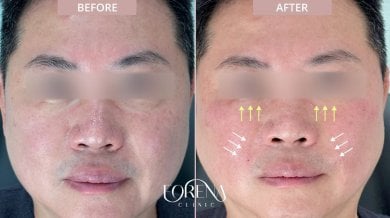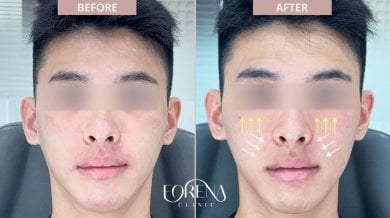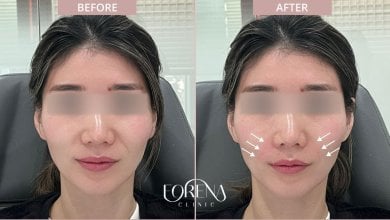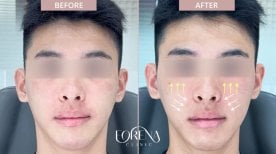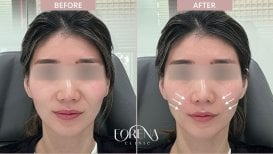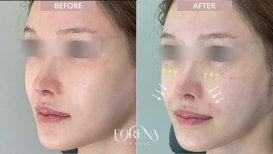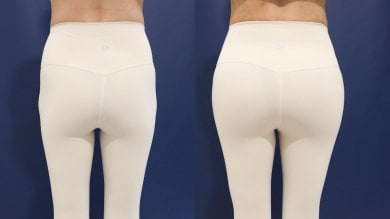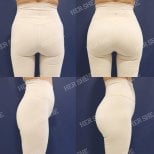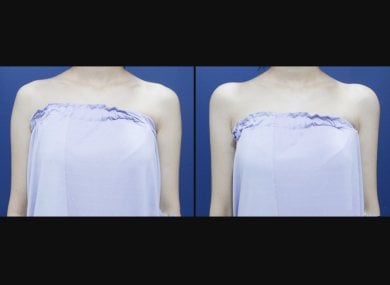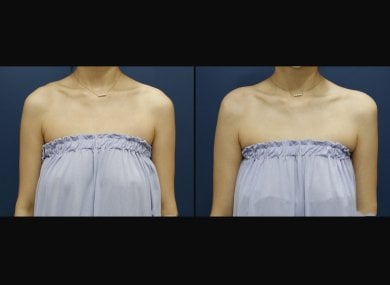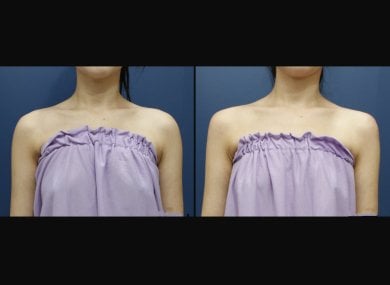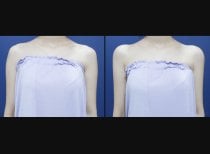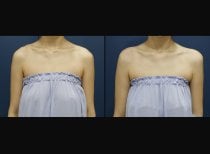- Yeom Jihye is a lifetime member of the Korean Society for Laser Dermatology and Hair Restoration.
- Forena Clinic is recognized for its expertise in aesthetic and laser-based procedures.
- Included Services: Radiesse (1 syringe), signature tightening injection, coffee zone.
- Stay Info: Accommodation and hotel stay are not included in the price.
- Method: Radiesse dermal filler injection combined with signature skin tightening injection.
How it works
How Much Does Fillers injection Cost in Republic of Korea?
| Republic of Korea | Turkey | The USA | |
| Fillers injection | from $1,032 | from $400 | from $800 |
| Hyaluronic Acid Fillers | from $302 | from $700 | from $900 |
| Vaginal Filler | - | from $1,200 | from $2,500 |
| Male Lip Filler | - | from $400 | - |
| Male Jaw Filler | - | from $800 | from $3,200 |
Medically reviewed by
Fahad MawloodFillers injection Packages in Republic of Korea — January 2026
Dr. Jung Young Choon brings 40 years of plastic surgery expertise, having performed over 900 buttock lifts. The procedure typically ranges $1,800–$6,735, often combining autologous fat grafting with Epiticon thread lifting for natural results. Package includes airport transfers, 7-day hotel stay, and follow-up care. The clinic holds ASPS membership and specializes in natural-looking body contouring with minimal downtime.
- Jung Young Choon is a board-certified plastic surgeon and consultant for GELDERMA’s Lestylene Filler.
- HERSHE Plastic Surgery Korea has secured patents for growth factor production from adipose-derived stem cells.
- Included Services: Language assistance, post-op medications.
- Stay Info: Accommodation is not included; 0 days stay required in the country.
- Technique: Hyaluronic acid filler (20cc) with trapezius muscle 100 unit Botox.
Discover the Best Fillers injection Clinics in Republic of Korea: 7 Verified Options and Prices
BIOFACE Clinic
Jooyoung Park
Onlif Plastic Surgery Korea
Jae Un Lee
Fillers injection in Republic of Korea: Your Travel Plan
Day 1: Arrival in Republic of Korea
- You should have your travel documents and clinic appointment details ready for a smooth arrival.
- Check into your accommodation and rest after your journey.
- Hydrate well and avoid alcohol to prepare your body for the procedure.
- Contact the clinic to confirm your consultation and procedure schedule for the next day.
Day 2: Consultation and Facial Design
- You need to attend your scheduled consultation with the plastic surgery specialist.
- Discuss your concerns, such as wrinkles, volume loss, or facial contouring, with the specialist.
- The specialist will plan a facial design tailored to your goals.
- Confirm the type of fillers to be used, like hyaluronic acid-based fillers, known for natural-looking results.
- Clarify any questions about the procedure, recovery, and expected outcomes.
Day 3: Fillers Injection Procedure
- Arrive at the clinic at your scheduled appointment time.
- The procedure usually involves minimal downtime and is virtually painless.
- The specialist will administer dermal fillers to targeted areas for smoother, youthful skin.
- After the procedure, you may notice immediate improvements in facial volume and contour.
- Follow post-procedure instructions, such as avoiding strenuous activities and excessive sun exposure.
Day 4: Post-Procedure Care
- Continue to follow the clinic’s aftercare instructions diligently.
- Apply cold compresses if you experience swelling or discomfort.
- Avoid touching or massaging treated areas to allow fillers to settle properly.
- Stay in touch with the clinic for any concerns or unusual symptoms.
- Maintain a healthy diet and hydrate well to support recovery.
Day 5: Follow-Up and Departure Preparation
- Attend a follow-up appointment at the clinic, if scheduled, to assess results and address concerns.
- Ensure you have all necessary documentation and post-procedure care instructions for your return home.
- Pack your belongings and prepare for departure from the Republic of Korea.
- Contact the clinic if you need further assistance or have additional questions before leaving.
Day 6: Departure and Ongoing Care
- Check out from your accommodation and head to the airport for your flight home.
- Continue to follow any ongoing care instructions provided by the clinic to maintain filler results.
- Monitor treated areas and reach out to the clinic for follow-up consultations as needed.
- Remember, the results of fillers can last several months, depending on the type used and individual factors.
Our Trusted Doctors
View all DoctorsKim Jung Hue
Yeom Jihye
Jooyoung Park
Jaehoon Choi
Video Stories from Bookimed Patients
Reviews about Bookimed: Discover Patients' Insights
All reviewsFillers injection: Before & after photos
View allShare this content
FAQ about Fillers injection in Republic of Korea
What should you know about South Korea before the trip?
Currency | South Korean Won (you also can pay for services in dollars) |
Best period for the trip | April, May & June or September, October & November. |
Language | Korean (most of medical staff speaks English fluently) |
Visa | none required for stays under 90 days or less |
Time difference with Europe | 9 hours |
Time difference with the USA | 9 hours |
Capital | Seoul |
Medical tourism center | Seoul |
Popular resorts | Gangwon-do, Gyeongju, Boseong, Jeju |
What is the level of medicine in South Korea?
Healthcare is the key development sector of the Korean government. The Korean authorities are convinced that care for the citizens' health should be an absolute priority of state policy and spend about 1 billion a year for medical tourists attraction.
According to Mark Britnell, hospitals dominate the health system. 94% of hospitals are privately owned.
What hotel services are provided here?
In South Korea, hotels of different price ranges and service levels are presented. Most tourists choose 4 and 5 star hotels with all-inclusive meals. Such hotels have everything for a comfortable stay: varied food, a large well-groomed territory, animation for children and adults. Some hotels have their own water park, which guests can use for free. Budget travelers can afford to book an economical 3-star hotel with half board or no meals at all.
Do I need a visa to South Korea?
Today, South Korea has visa-free agreements with 112 states. None visa is required for stays under 90 days or less. To stay longer in this country, you need a visa. What states need a visa for treatment in South Korea and what countries can cross the border free and easy read here.
What documents are required to apply for a visa to South Korea for treatment?
Visas for travel to South Korea require a number of documents. The necessary papers can be submitted 90 days before the planned departure. Lists of documents includes:
- ID card
- confirmation of online registration and filling out the questionnaire
- certificate of income and availability of funds
- insurance policy for a stay in South Korea (original and copy)
- 2 photos (5x6)
- visa receipt
- booking of flight and hotel
- medical opinion about the need for treatment.
What are the most popular plastic surgery procedures?
According to ASPS statistics, 17.7 mln cosmetic surgeries and 5.8 mln reconstructive procedures have been performed in 2018. Among cosmetic procedures the most popular are:
- breast augmentation
- liposuction
- rhinoplasty (nose job)
- eyelid surgery
- tummy tuck.
Tumor removal, laceration repair, maxillofacial surgery, scar revision, hand surgery are the most common operations in the context of reconstructive surgery.
